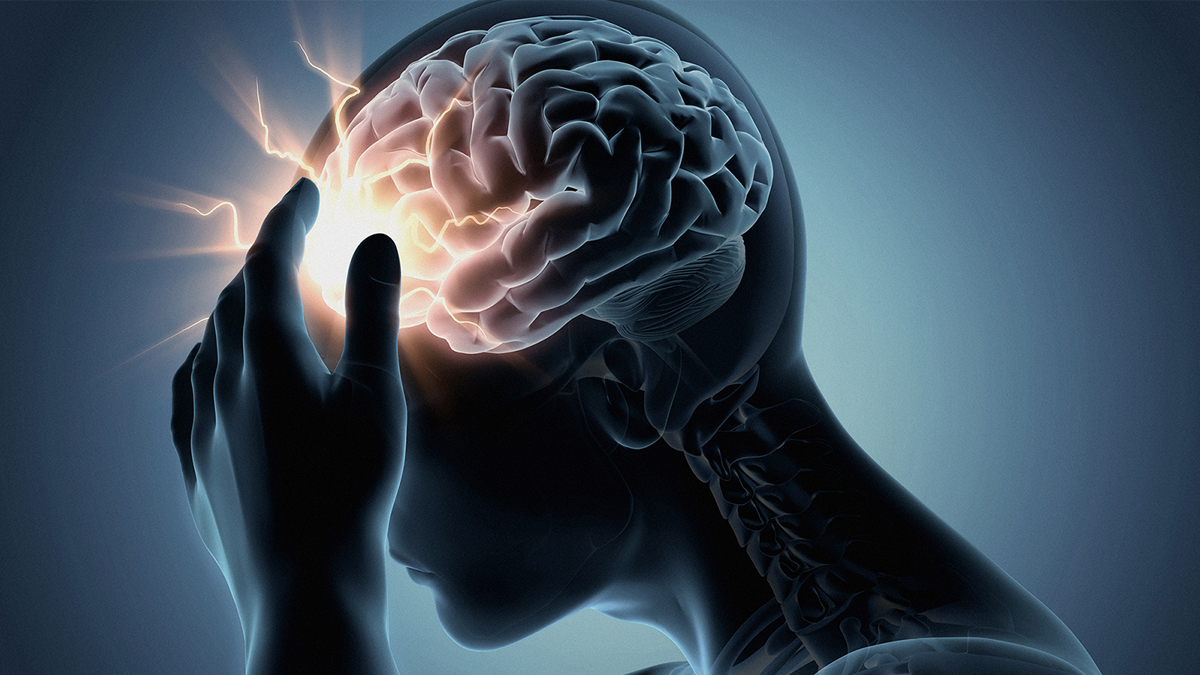Bipolar Disorder and Conduct Disorder SOAP Note
Bipolar Disorder and Conduct Disorder SOAP Note
Bipolar Disorder and Conduct Disorder SOAP Note
:max_bytes(150000):strip_icc()/GettyImages-854198472-f30ba87c80f04347a87ccecf71dc3420.jpg)
Patient Initials: R.G.
Gender: Male
SUBJECTIVE:
CC: “I want to be left alone and be respected.”
HPI: The patient has a history of oppositional defiant disorder and mood dysregulation disorder and has now been admitted to the inpatient unit due to property destruction. Reportedly, the patient was getting his phone fixed, and he got into an argument with people at the mall. The police were called, and he was brought to the hospital. The patient has been irritable, threatening his parents, and does not follow rules at home. He has not been taking medication, but smoking marijuana. The patient was suspended from school after he was found possessing cannabis.
Social History: R.G. lives with his parents. Patient has two other siblings, a sister and brother.
Education and Occupation History: R.G. is in high school.
Substance Current Use and History: Recreational drugs, Cannabis, 1 Daily
Legal History: The client denies any legal history, but he been punished in school by suspension.
Family Psychiatric/Substance Use History: Patient denies family mental health. Reports mother and father using alcohol occasionally.
Past Psychiatric History:
Hospitalization: History of multiple hospitalizations at BNBMC.
Medication trials: Denies history of medical trials
Psychotherapy or Previous Psychiatric Diagnosis: Patient is historically noncompliant with medication after leaving hospital. He has a history of physically aggressive behavior towards mother and sister with property destruction but a diagnosis was not established.
Medical History: None.
- Current Medications: Denies using any medications currently.
- Allergies:
- Reproductive Hx: Sexually active. R.G. states using protection.
ROS:
General: Patient is well-nourished, normal activity levels. Denies fever or fatigue.
HEENT: Eyes: Patient denies visual loss, blurred vision, double vision, or yellow sclerae. Ears, Nose, Throat: No hearing loss, sneezing, congestion, runny nose, or sore throat.
Skin: No rash or itching.
Cardiovascular: Denies chest pain, chest pressure, or chest discomfort. No palpitations or edema.
Respiratory: Denies wheezes, shortness of breath, consistent coughs, and breathing difficulties while resting.
Gastrointestinal: Patient denies diet changes, feelings of nausea and vomiting. Denies diarrhea. No abdominal pain or blood. Denies constipation. History of GERD.
Genitourinary: Denies burning on urination, urgency, hesitancy, odor, odd color
Neurological: The patient denies headaches, dizziness, syncope, paralysis, ataxia, numbness, or tingling in the extremities. No change in bowel or bladder control. Reports concentration and attention problems.
Musculoskeletal: The patient denies muscle pain and weakness. Denies back pain and muscle or joint stiffness. Moves all extremities well.
Psychiatric: History of behavior problems. Recent complaints of ill conduct.
Hematologic: Denies anemia, bleeding, or bruising.
Lymphatics: Denies enlarged nodes. No history of splenectomy.
Endocrinologic: Denies sweating. No reports of cold or heat intolerance. No polyuria or polydipsia.
OBJECTIVE:
Vital signs: Stable
Temp: 98.1F
B.P.: 128/62
P: 84
R.R.: 20
O2: 100% Room air
Pain: 0/10
Ht: 5’9 feet
Wt: 170 lbs
BMI: 25.1
BMI Range: Overweight
LABS:
Lab findings WNL
Tox screen: Positive
Alcohol: Positive
Physical Exam:
General appearance: The patient is awake, healthy-appearing, well-developed, and well-nourished.
HEENT: Normocephalic and atraumatic. Sclera anicteric, No conjunctival erythema, PERRLA, oropharynx red, moist mucous membranes.
Neck: Supple. No JVD. Trachea midline. No pain, swelling, or palpable nodules.
Heart/Peripheral Vascular: Regular rate and rhythm noted. No murmurs. No palpitation. No peripheral edema to palpation bilaterally.
Cardiovascular: The patient’s heartbeat and rhythm are normal. The patient’s heart rate is within normal range, and capillaries refill within two seconds.
Musculoskeletal: Normal range of motion. Normal motor strength and tone.
Respiratory: No wheezes, and respirations are easy and regular.
Neurological: Balance is stable, gait is normal, posture is erect, the tone is good, and speech is clear. The patient has occasional headaches.
Psychiatric: The patient is easily distracted, irritable, and uncooperative in some instances.
Neuropsychological testing: Social-emotional functioning is impaired.
Gait/station: Stable.
Mood: Fair.
Affect: Fair.
Thought process/associations: comparatively linear and goal-directed.
Thought content: Thought content was appropriate.
Attitude: The patient was irritable and uncooperative at times
Orientation: Oriented to self, place, situation, and general timeframe.
Attention/concentration: Impaired
Insight: Good
Judgment: Good.
Remote memory: Good
Short-term memory: Good
Intellectual /cognitive function: Good
Language: clear speech, with a tone assessed to be normal
Fund of knowledge: Good.
Suicidal ideation: Negative.
Homicide ideation: Negative.
ASSESSMENT:
Mental Status Examination:
The male patient, 17, complains of wanting be left alone and respected. The patient presents with ill and uncontrollable behavior and conduct. The patient is combative, bullying, uncooperative, and easily agitated. Building rapport was difficult because the patient had trouble paying attention, and was quickly disoriented. His mood and affect were fair, but he was apathetic. He denies having any suicidal or homicidal ideation.
Differential Diagnosis:
- 9 Conduct Disorder and F31.1 Bipolar I Disorder (Confirmed)
Bipolar disorder or bipolar affective disorder ranks as one of the top 10 major causes of disability worldwide. Bipolar and related disorders include undefined bipolar or related disorders, bipolar I disorder (BD-I), bipolar II disorder (BD-II), cyclothymic disorder, and other specified bipolar and related illnesses. It is common to first misdiagnose bipolar disorder, which is characterized by recurrent periods of mania or hypomania that alternate with depression (Jain & Mitra, 2022). Per the DSM-5 diagnosis, for a patient to be diagnosed with bipolar I disorder, criteria should meet for at least one manic episode, which could have been preceded or followed by a significant depression or hypomanic episode, although major depressive or hypomanic episodes are not necessary for the diagnosis (Jain & Mitra, 2022). Bipolar I disorder often co-occurs with conduct disorder. In clinical, epidemiological, and research samples, a strong and bidirectional connection between pediatric bipolar I (BP-I) disorder and conduct disorder (CD) has continuously been found (Wozniak et al., 2019). Even though BP-I and CD are two separate, highly morbid illnesses, their co-occurrence signals a gravely compromised clinical condition.
Conduct disorder (CD), like oppositional defiant disorder (ODD), is a disruptive behavioral disorder. The patient has previously been diagnosed with ODD. In some circumstances, ODD appears before CD. CD is characterized by a series of behaviors that include showing hostility and violating other people’s rights (Mohan et al., 2023). It is vital to remember that occasional rebellious conduct and a propensity to disrespect and disobey authority figures can be seen frequently during childhood and adolescence. The signs and symptoms of CD show a pervasive and recurrent pattern of hostility towards people and animals, and the destruction of property and breaking of regulations (Sagar et al., 2019). Per the DMS-5 criteria, an individual has to exhibit behaviors that include violation of other people’s rights and disregard acceptable conduct. The individuals should demonstrate dysfunction in various areas, including aggression toward other people and animals such as initiating fights, carrying and using weapons, bullying, threatening, and being cruel towards people and animals, deliberate property destruction, stealing and lying, and significant violation of rules like running away from home and staying out late (Zhang et al., 2018). R.G. presents with all these dysfunctions, confirming the diagnoses.
- 3 Oppositional Defiant Disorder
Oppositional defiant disorder (ODD) frequently precedes CD. ODD is infrequently recognized in older children and teenagers, owing partially to the continuously established disagreements between children and their parents. Males are more likely than girls to have ODD in preadolescence (1.4:1). However, this male predominance does not exist in adolescents or adults (Aggarwal & Marwaha, 2022). Symptoms tend to be steady around the ages of five and 10, after which they begin to decline as prevalence reduces as people age. It primarily involves problems with emotional and behavioral inhibition. A recurrent pattern of anger or irritation, argumentative or rebellious behavior, or revenge towards other people is the primary hallmark of ODD, per the DSM-5 criteria (Aggarwal & Marwaha, 2022). Because the patient also displayed additional symptoms that met CD criteria alongside the ODD symptoms, this diagnosis was ruled out.
(Bipolar Disorder and Conduct Disorder SOAP Note)
- 9. Attention Deficit Hyperactivity Disorder
ADHD co-occurs frequently with CD, hampering an individual’s capacity to function. People who suffer from this condition have excessive degrees of impulsivity, hyperactivity, or inattentiveness. According to Magnus et al. (2023), young children with ADHD frequently display inattentiveness, lack of attention, disorganization, difficulties finishing tasks, forgetfulness, and losing things. For symptoms to be considered ADHD, they must appear before the age of 12, last for six months, and interfere with daily tasks. It must be present in numerous settings, such as at home and work or in both after-school programs and classes (Magnus et al., 2023). Large-scale effects could lead to challenging social relations, an increase in risky behavior, job losses, and challenges in the classroom. Because ADHD was not recognized before the age of 12 and because the client only exhibits inattentiveness and no functioning challenges, the diagnosis was rejected.
PLAN:
The patient would benefit from combining medication and psychotherapy.
Safety Risk/Plan:
R.G. has no present objective or desire to hurt himself or others. There are no suicidal or homicidal ideas in the patient. It is not essential to hospitalize the patient.
Pharmacological Interventions:
Pharmacotherapy tries to treat mental co-morbidities using the appropriate medications, such as stimulants and non-stimulants for the treatment of ADHD, antidepressants for treating depression, antiepileptic drugs treating bipolar illness, and mood stabilizers for treating aggression and mood dysregulation (Mohan et al., 2023). Traditional mood stabilizers that can elevate mood include second-generation antipsychotics and antiepileptic drugs (AEDs). Proposed medication plan includes Depakote 250 in AM, 500 at bedtime, (delay release) Risperidone 1 mg bid and Cogentin 0.5 once a day.
(Bipolar Disorder and Conduct Disorder SOAP Note)
Psychotherapy:
The psychosocial treatment that can help address conduct disorder in R.G. includes parent management training, which teaches parents ways to discipline their children consistently, reward positive behavior properly, and promote prosocial behavior in young people, multisystemic therapy, which focuses on family, school, and individual issues, and anger management training. Additionally, individual psychotherapy that emphasizes problem-solving skills helps treat CD by fostering connections through resolving interpersonal conflicts and by teaching assertiveness to reject negative communal influences (Mohan et al., 2023). Community-based treatment will be centered on creating therapeutic school settings that can provide a structured program to reduce disruptive behaviors in the future.
Education:
- Educate parent and patient on drug adherence, potential adverse effects, and complications from taking the medication.
- Educate the patient regarding consistent therapy sessions and why they are necessary.
- To prevent relapse, monitor withdrawal symptoms frequently.
- Inform the client regarding healthy behaviors and attitudes.
- Encourage the patient to cooperate with the medical team and to seek assistance at any time.
- Encourage the client to take part in group therapy or a support group to develop social skills.
Consultation/follow-up: Follow-up is in two weeks for further assessment.
Reflection
Children with bipolar disorder are more likely to experience conduct issues. Children and adolescents who have conduct disorders are prevalent, and these disorders are frequently linked to developmental stages and traits. Adolescence is a time when occasional disobedience and bad behavior is normal or anticipated. When there is a reoccurring pattern and behavioral dysfunctions are present, the situation becomes problematic. In some cases, such as this one, parents and instructors are unable to effectively handle conduct dysfunctions and must seek professional assistance. Since the patient is seen as problematic and may become aggressive toward the practitioner, dealing with CD presents difficulties for practitioners as well. But when professionals, parents, and instructors collaborate, the process is more successful.
(Bipolar Disorder and Conduct Disorder SOAP Note)
At some point in their lives, over half of all Americans will be diagnosed with a mental condition. Healthy People 2030 emphasizes the prevention, screening, evaluation, and treatment of behavioral and mental problems (Healthy People 2030, n.d.). The goals for mental health and mental disorders also include improving the health and standard of living for those who suffer from these problems. Health promotion techniques for conduct disorder can assist reinforce responsible conduct by providing consistent adult caregiving, positive emotional support, proper learning and social skills, an easy temperament, a sense of competence, and optimistic worldviews. Regarding ethical considerations in treating patients with bipolar and conduct disorders, autonomy and confidentiality issues can arise, given that the client is a minor. Any sort of treatment should only be given with the parent’s informed consent. If I were given another chance to work with the client, I would ask the instructor and the school’s disciplinary staff for information so that I could create a more thorough diagnosis and treatment plan.
References
Healthy People 2030. (n.d.). Mental Health and Mental Disorders. https://health.gov/healthypeople/objectives-and-data/browse-objectives/mental-health-and-mental-disorders
Jain, A., & Mitra, P. (2022). Bipolar affective disorder. In StatPearls [Internet]. StatPearls Publishing.
Mohan, L., Yilanli, M., & Ray, S. (2017). Conduct disorder. In: StatPearls [Internet]. StatPearls Publishing.
Aggarwal, A., & Marwaha, R. (2022). Oppositional Defiant Disorder. In StatPearls [Internet]. StatPearls Publishing.
Magnus, W., Nazir, S., & Anilkumar, A.C. (2023). Attention Deficit Hyperactivity Disorder. In: StatPearls [Internet]. StatPearls Publishing. https://www.ncbi.nlm.nih.gov/books/NBK441838/
Sagar, R., Patra, B. N., & Patil, V. (2019). Clinical Practice Guidelines for the management of conduct disorder. Indian journal of psychiatry, 61(Suppl 2), 270–276. https://doi.org/10.4103/psychiatry.IndianJPsychiatry_539_18
Wozniak, J., Wilens, T., DiSalvo, M., Farrell, A., Wolenski, R., Faraone, S. V., & Biederman, J. (2019). Comorbidity of bipolar I disorder and conduct disorder: a familial risk analysis. Acta psychiatrica Scandinavica, 139(4), 361–368. https://doi.org/10.1111/acps.13013
Zhang, J., Liu, W., Zhang, J., Wu, Q., Gao, Y., Jiang, Y., Gao, J., Yao, S., & Huang, B. (2018). Distinguishing Adolescents With Conduct Disorder From Typically Developing Youngsters Based on Pattern Classification of Brain Structural MRI. Frontiers in human neuroscience, 12, 152. https://doi.org/10.3389/fnhum.2018.00152


:max_bytes(150000):strip_icc()/Health-adhd-overview-Mira-Norian-final-3d6ecb1ef018467ab60b9b93158edeba.jpg)








